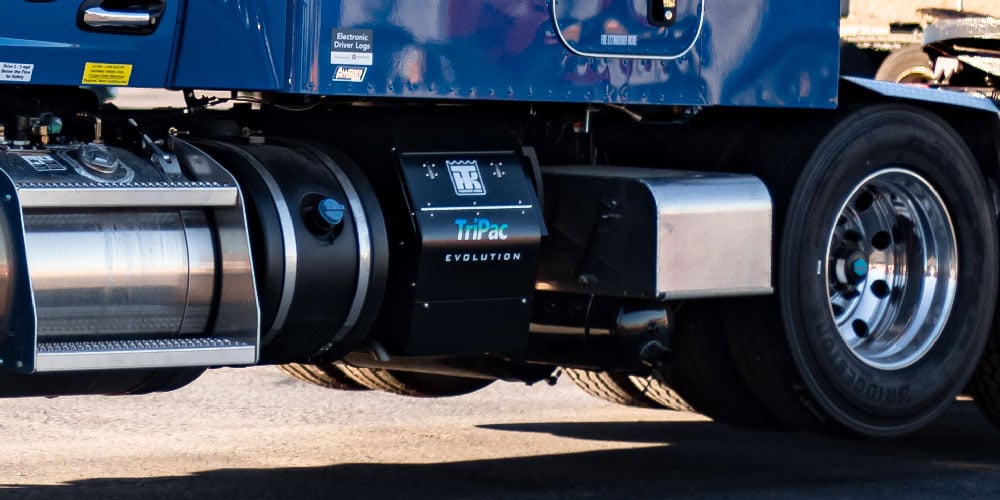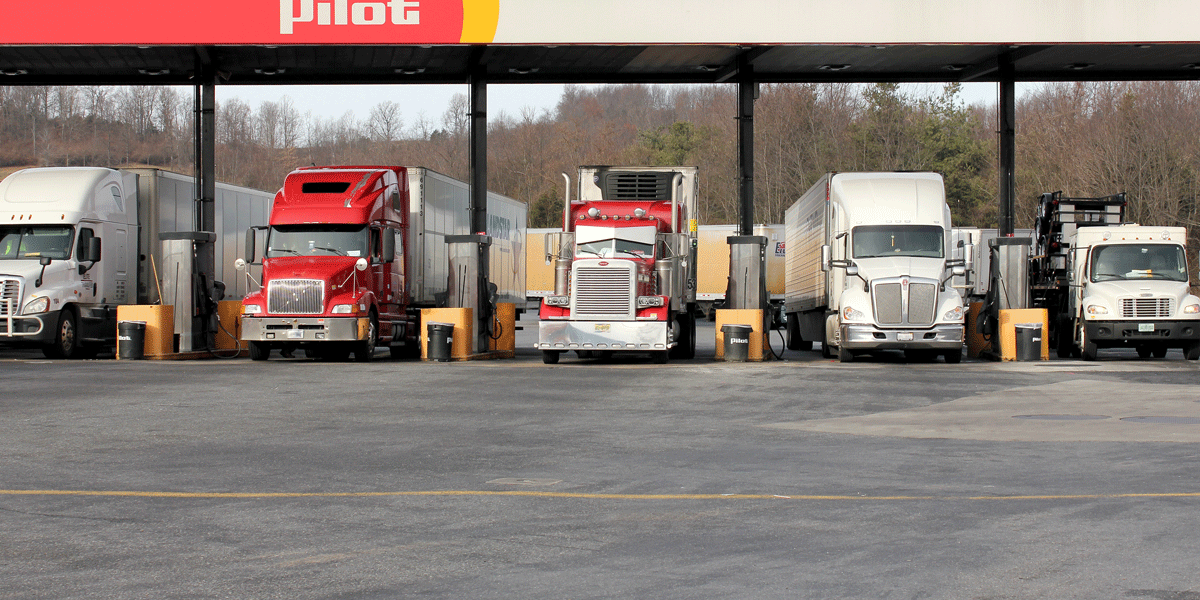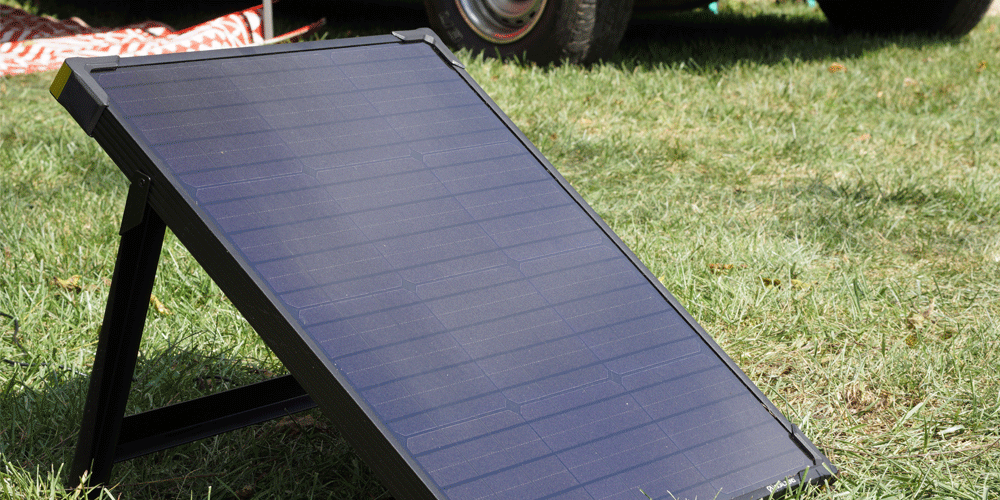Brent received his bachelor’s degree in accounting from St. Cloud State University. He spent nine years in the retail industry before joining the ATS Team in 2012. Brent worked in the driver recruiting department for 2.5 years before transitioning to the Competitive Equipment Sales (CES) Team. He manages the leases of independent contractors from ATS and its affiliates.
Reducing idle time is a top priority for many drivers who are looking to save a few bucks.
Many drivers think the only solution for lowering idle time is with an auxiliary power unit, or an APU, because it provides in-cab power. Because of this, many drivers don’t want a truck without an APU, and if the company they want to drive for doesn’t have one, they’ll simply hang up the phone and call someone else.
Are you one of those drivers?
As a driver, you’re always looking for ways to make your dollar last longer. You’re looking for any way that you can save money and keep the most money in your pocket. So if you’re idling your truck every night, you know that you’re not doing all you can to save money. Instead, you’re spending far more on fuel than you should be.
An APU seems like the easy solution, right? But without knowing alternative ways to solve your problem, you might actually be spending more than you could be saving with another, more affordable solution.
As a trucking carrier that has trucks with and without APUs, we want to give you an honest look at whether you need an APU in your truck, if it’s worth the investment to you and if you can find another more affordable option.
Understanding alternatives to APUs — and understanding whether or not you need one in the first place — can save you a lot of money and idle time in the long run.
What is an APU?
An APU is a small unit — essentially an efficient motor — that is mounted on the tractor. It provides power throughout the cab, including air conditioning. Some APUs also include heat as well.
The APU may be operated by a small diesel engine or batteries.
APUs allow drivers to have power, air conditioning and heat without idling their trucks. Drivers won’t need to idle their trucks when they’re on break or when they’re sleeping. When you don’t have to run the truck all the time to generate electricity or air conditioning, you can save the wear and tear on your engine.
When you have to idle your truck, you use fuel. Therefore, you’ll save money on fuel costs when you idle your truck less. An APU can provide cost savings on fuel. For many drivers, those cost savings can be the difference between success and failure.
However, some drivers will still idle their trucks with an APU. Because of this, some leasing companies put variable parameters on their trucks with APUs. An ambient temperature sensor monitors the temperature outside. For example, it could be set up so that the truck can’t idle for more than five minutes at a time when the temperatures are between 0 and 90 degrees.
This ensures that the APU is working properly, it’s being used and it’s being repaired when it needs to be. After all, an APU is a large initial investment and carriers and leasing companies alike want to ensure the asset is being used.

Problems with APUs
APUs sound like a great idea until you realize how costly they are. With purchase and installation, they can cost $12,000 or more upfront. If you don’t already have that money saved up and readily available, it can be a lot of money that you need to save over a lengthy period of time.
Unfortunately, the APU isn’t immune to maintenance issues. We took a random sample of the APUs in our fleet. During their lifetime, on average, the maintenance costs were $6,700. Keep that number in mind for later.
That’s a lot of money upfront and a lot of downtime spent fixing an expensive asset.
An APU also decreases in value. You may have spent $12,000 on it upfront, but when you go to sell that truck down the road, the APU will maybe be worth $2,000 or nothing at all.
If you’re leasing your truck, some companies may not let you put an APU in your truck — especially if you are only doing a short-term lease.
Is the APU Cost Investment Worth It?
Some carriers have APUs on all their trucks; some do not. That means if you want one — or another alternative — you will need to invest in it yourself.
Choosing an APU is a decision you shouldn’t take lightly. While it’s clear that you shouldn’t idle your truck ‘round the clock, 365 days per year, an APU may or may not be the right solution for you.
With an APU, you are essentially paying for comfort. If you have the money and can afford to do so, go for it! But if you need to save up for it, consider the different costs that will go into the APU — not just the $12,000 cost to install. You must consider maintenance costs and how long you plan on driving the truck. For instance, if you don’t plan on keeping the truck past a year or two, the price probably isn’t worth it for you.
Other Ways to Reduce Idle Time
Because there is a higher investment on the front end to install the APU, leasing a truck with an APU will result in a higher truck payment. There will also be a higher maintenance deduction to make sure you have money in your maintenance account to cover the cost of repairs. Physical damage insurance may also be higher.
If you’d like to explore other, more affordable options to provide power and heat to your cab, consider options like an inverter or bunk heater.
Power Inverter
A power inverter connects to the battery on your truck. It takes the DC power from your battery and inverts it to AC power so that your devices can use it.
It provides an outlet for the small appliances you may desire to use in your bunk, including your television, gaming system, fan or microwave. It can also charge your devices, like your cell phone.
As long as you don’t try to pull too much power, the inverter will power your devices. You have to be mindful of the watts on your inverter and the estimated watts on your appliances. The more power, the bigger the inverter.
You can power your devices for a solid four to six hours before you will need to turn the engine on to charge the inverter again. It will take a few hours to get it back up to power.
So while you don’t have to run the main engine of the truck to use the inverter, once the engine battery(s) is depleted to a low level of energy, it will need to be charged again. At that point, many drivers simply keep their trucks running.
You can get a power inverter in the 1500 to 2000 watt range for a couple of hundred bucks. More wattage will cost more. For instance, upwards of 2,000 to 3,000 watts will cost over $300.
You will need to get approval to install an inverter in your truck if you don’t own it.
Keep in mind that you will need an inverter if you have an APU, but you can have an inverter without an APU.

Bunk Heater
You can get a bunk heater that operates on diesel fuel without running your truck. This small device — about the size of a loaf of bread — allows you to run your bunk heater without an APU.
The bunk heater has low fuel consumption, even on full blast. When it is turned up on high, it only uses 0.07 gallons of diesel per hour. The system is temperature-controlled, so it will cycle on and off as the night goes on. That means you might not use 0.07 gallons per hour.
In comparison, when you are idling your truck to get heat, you will use approximately 0.55 gallons of fuel an hour. Your engine will not shut off as you sleep, so you will consistently use 0.55 gallons of fuel per hour every night that you idle your truck.
If you’re running your bunk heater for 10 hours each night compared to idling your truck each night for a week, and diesel is $4.00 per gallon, you would be spending $19.60 versus $154.00 on fuel each week. That’s a difference of $134.40 each week during the winter simply to have heat.
You will save a significant amount of money on fuel with a bunk heater versus idling your truck. A bunk heater will run you about $900 as a factory-installed item. It is both affordable to buy and cheap to operate, and it will provide you with comfort in your cab for over half the year when it’s cold outside.
Generator
A portable generator might be another option for you. They create their own electricity with a combustion engine. These generators are typically used when camping or as a backup option if the power in your house goes out.
You can use a generator for heating, cooling and powering your accessories in-cab.
Drivers strap them onto their trucks and lock them up to prevent them from being stolen.
You can expect to pay about $500 and up for these. One of the nicest generators on the market can cost you well into the low thousands.
Solar Panels
They make solar battery chargers that require sunlight to charge. Portable solar panels have gotten more efficient through the years and only take a few hours to charge.
However, they typically don’t store enough power to last drivers all the way through an off period. Some drivers use them instead to supplement the use of another power source, like an APU. The solar panels are used to charge engine batteries as well as an additional bank of batteries.
You can purchase a solar panel for a couple of hundred dollars to a couple of thousand dollars — depending upon how powerful the panel is.
If An APU Isn’t Right For Me, What’s the Best Option?
Remember earlier when we mentioned that the average cost of maintenance during an APU’s lifetime is $6,700? Added to the initial cost of the investment, you’re looking at about $18,700 in costs over the APU’s lifetime.
Therefore, you should be saving that much in fuel alone to make the purchase worth it. Otherwise, you are losing money. If you’re a driver that doesn’t have that kind of money to lose, you may want to think about one of the other options on our list, like an inverter or a bunk heater.
For instance, when you compare the cost of the bunk heater to the APU, the cost savings are huge.
Consider that you have to use your air conditioning for only six months out of the year. If you have a bunk heater, you’ll need to idle your truck for air conditioning at 0.55 gallons per hour. An APU will use 0.2 gallons of fuel per hour. Based on diesel prices at $4.00, over the course of four years, the driver will only save around $5,000 on fuel with an APU.
Considering that the upfront cost of an APU is $12,000 and you may spend thousands of dollars on maintenance costs, you ultimately lose money with an APU. On the other hand, the bunk heater is only about $900 upfront.
If you want to save money, the most affordable solution is the bunk heater — especially if you don’t plan on keeping your truck long-term.
Carefully consider your options and crunch the numbers when deciding on the best solution for you. Talk to the carrier you’re driving with or the company you’re leasing from to talk through your options.
Reducing Idle Time is Just One Way to Maximize Your Income
When looking for an alternative to idling your truck, carefully consider all your options — from an APU to an inverter to a generator. Remember that an APU, while an attractive option, might not be the most cost-efficient option for you.
As a leasing manager, I work with drivers like you who are crunching numbers and trying to choose the most cost-efficient leasing truck option.
I know how important it is for you to maximize your income and save money. In addition to limiting idle time, there are eight key other things you can do to save money and maximize your income.


